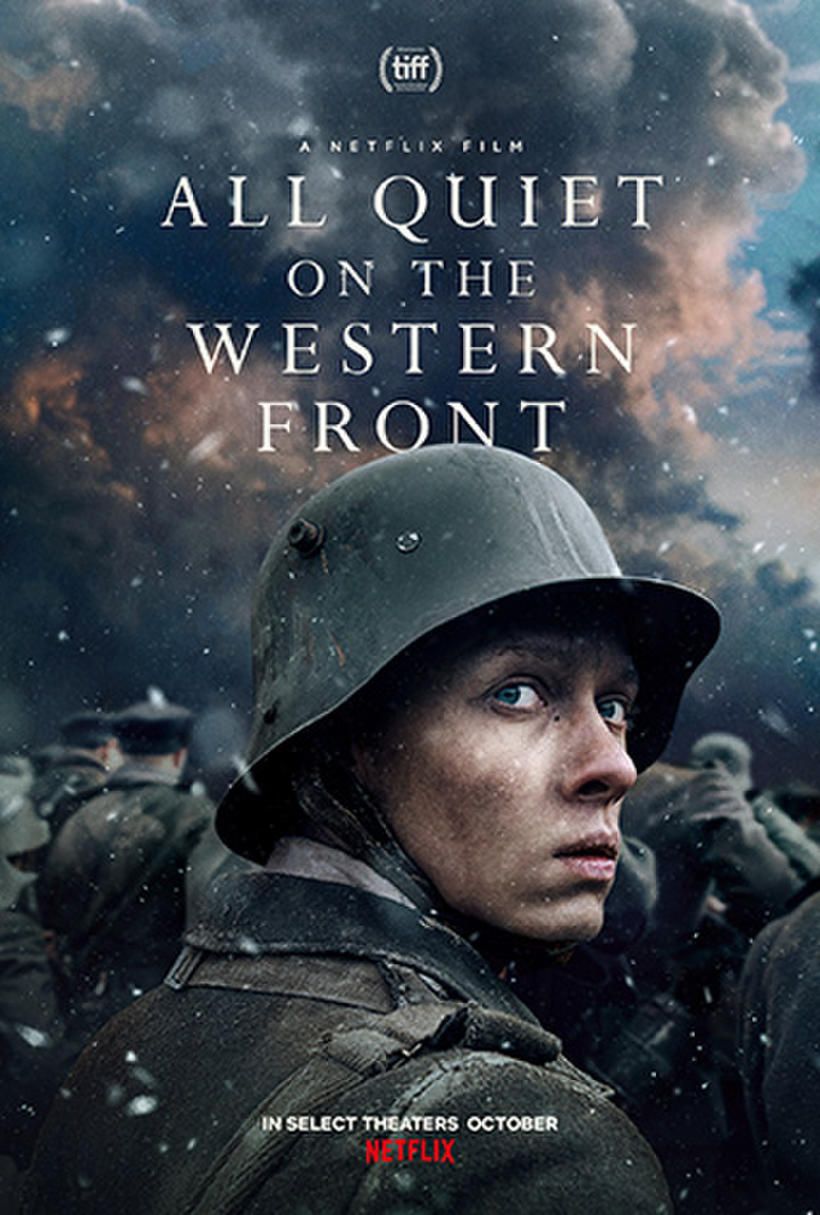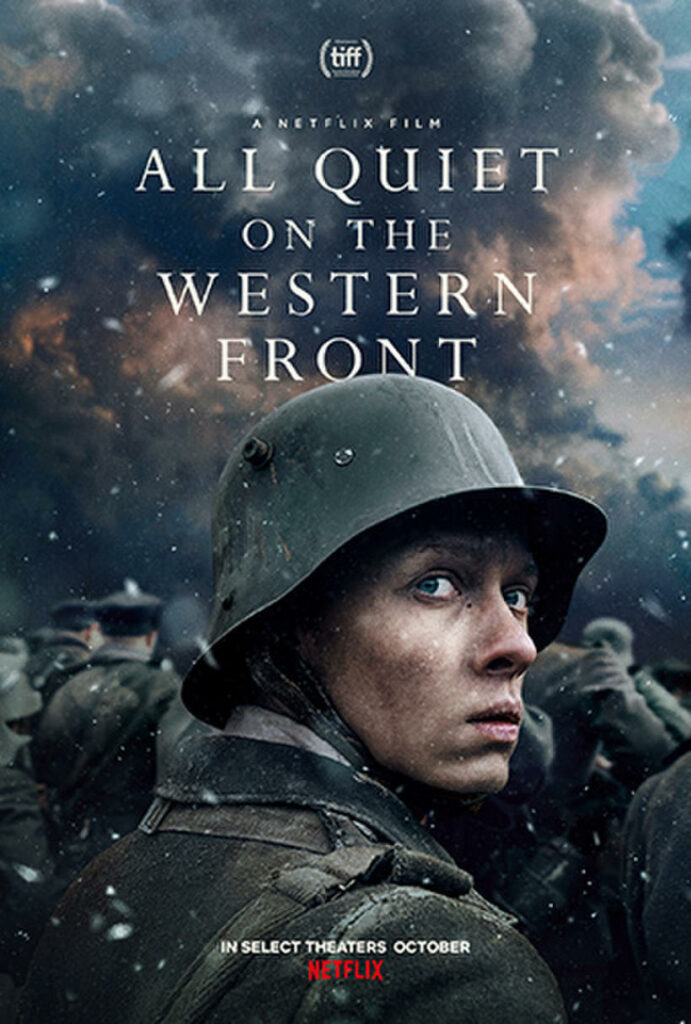
All Quiet on the Western Front–The Ugliness of War

All Quiet on the Western Front, an October 2022 Netflix release, is Germany’s submission for this year’s Academy Award. Based upon the 1929 antiwar novel by Erich Maria Remarque, we see a profound drama about idealistic teenage boys volunteering to join the Imperial German Army during the closing year (1917) of the First World War.
Seventeen-year-old Paul Bäumer (the baby-faced Felix Kammerer in his first cinematic role) is excited about enlisting with his classmates Albert Kropp, Franz Müller, and Ludwig Behm. The glimmer and shiny aspect of battle dims as he and his friends receive uniforms of deceased soldiers. The remaining storyline is about survival at all costs, inescapable from meaningless, inhumane suffering.
Deployed to northern France, the four teenagers become tutored in the ways of war by an older soldier whom they worship, Kat Katczinky. Their romantic view of war is soon shattered as the reality of trench warfare on the Western Front is entrapment for kill-or-be-killed. Paul forces himself to kill a French soldier about his age who is trying to escape almost certain death in the battlefield. The euphoria of repeatedly stabbing an enemy soldier soon evaporates as Paul witnesses the horrific death throes of the dying man, fruitlessly trying to staunch blood. The photo of the French soldier’s wife and small daughter slips out of his pocket. Paul is now damaged beyond repair.
As Germany faces the inevitability of defeat, the French and German troops agree to an armistice which the Germans will hate, foreshadowing the Second World War.
The cinematography is remarkable: in the opening clip, in black and white, what appears to be a landscape of rolling hills subtly changes to a pink meadow then to a young soldier’s face, caked with mud, pink-cheeked and adolescent. This viewer kept pausing the film–especially in its sometimes languorous moments–to admire a photographic still, breathtaking, sometimes heartbreaking. The acting–from a young cast of mostly neophyte actors (with the exception of Daniel Brühl from “Rush” and “The Alienist”) –is exceptional and the makeup and special effects convey the horrors of war so realistically that no other film–not even” Saving Private Ryan” or “Paths of Glory” –has this layering of death, bloodshed, and lacerating violation of spirit.
Capturing the naiveté of boys who are still children, yearning to be adults, portrays a new dimension of the experience of war. This is one of the most–if not the most–horrifying depictions of war this viewer has ever seen.
A masterpiece of the terrible myths of war. A beetle, collected in a matchbox by one of the boy soldiers, symbolizes the natural order. The beetle is persistent, a tangible survivor, yet fragile and vulnerable: also on earth for only a short time.
Availability: Netflix
Note: The violence and cosmetic effects of trench warfare and battle wounds are sickening at times.

Helen MacKinlay
“ All Quiet on the Western Front” was required reading at school while I was a teenager along with “The Red Badge of Courage”. I was deeply affected by it and haunted for days . Not sure if I can endure the film 65 years later ! Thank you for your eloquent descriptive review of what promises to be another shattering anti war film from Germany no less.
Diana Paul
Thank you for posting such a heartfelt comment!
lenore gay
I’ve read something familiar. Not interested to read about the war again.
lenore gay
I read a book years ago. That’s enough for me. Yes, warfare and battle wounds are gory.